
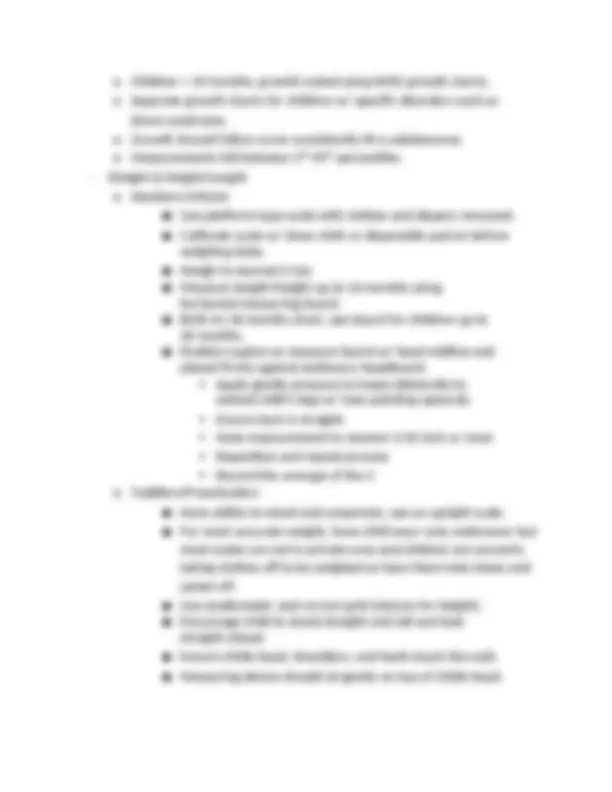
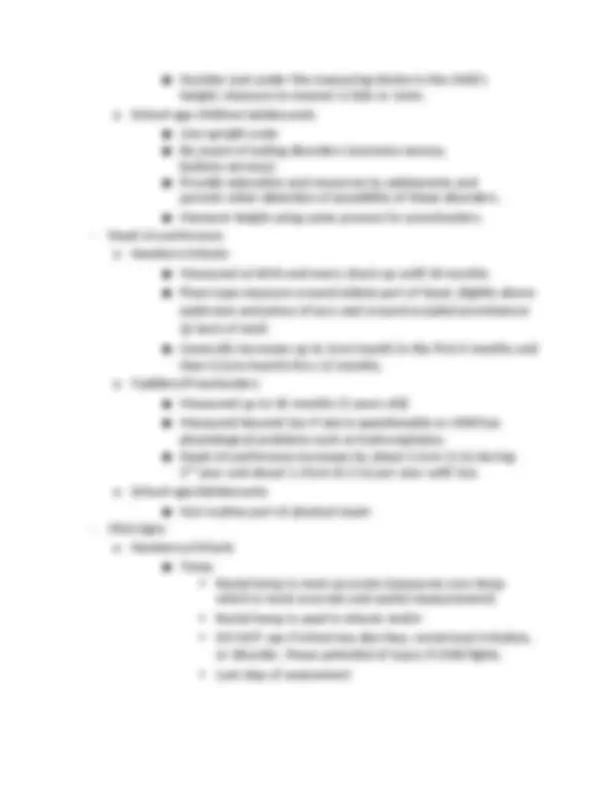
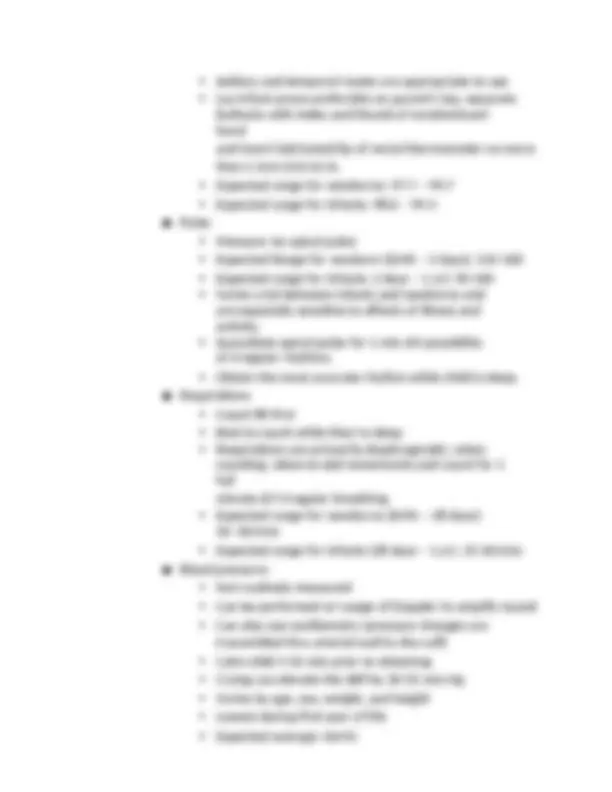
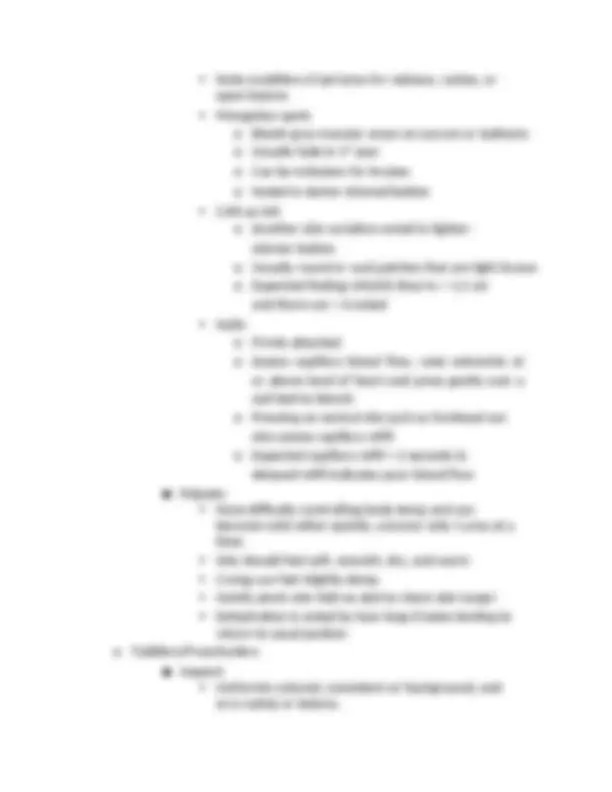
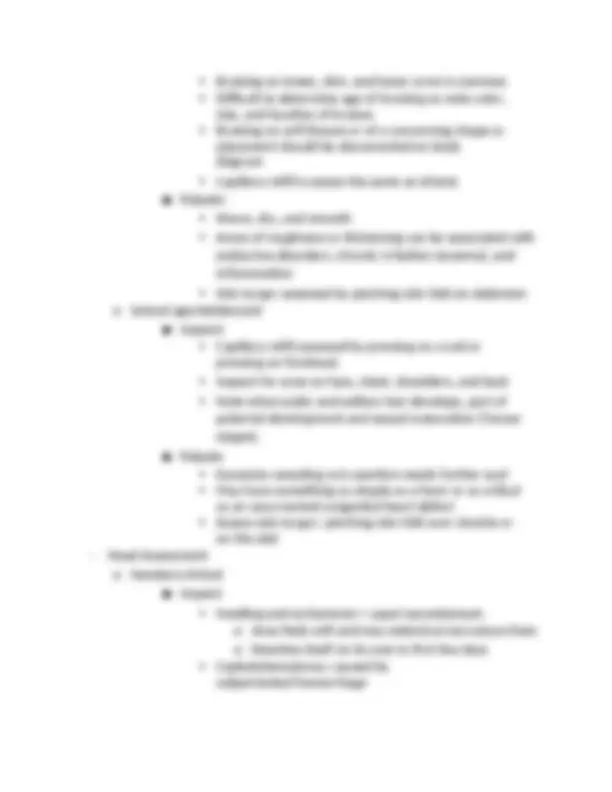
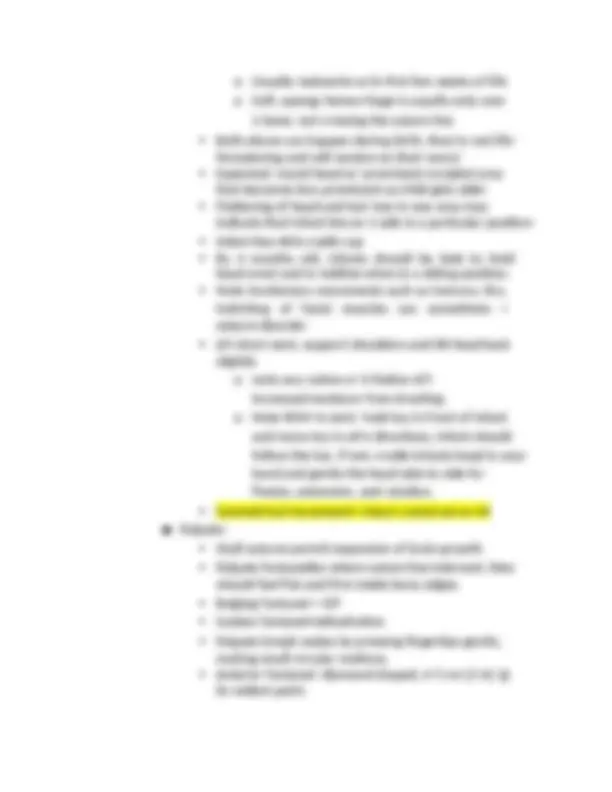
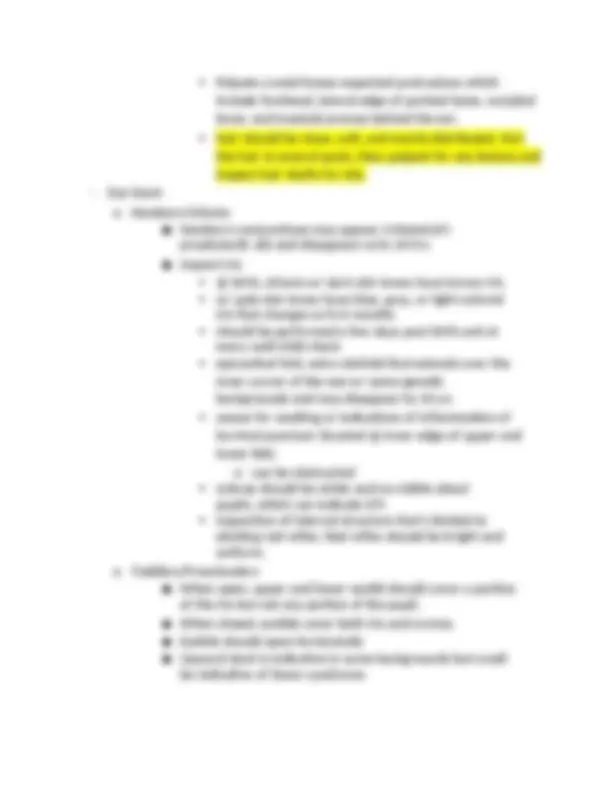

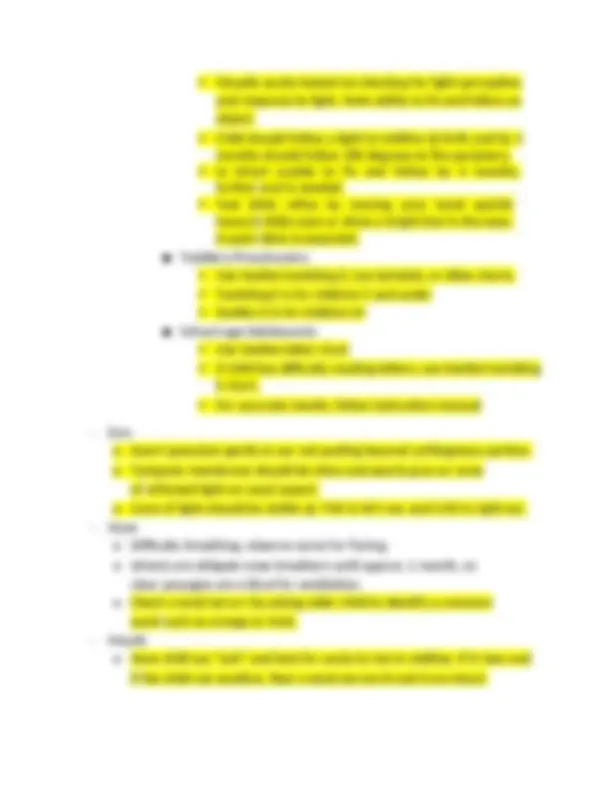
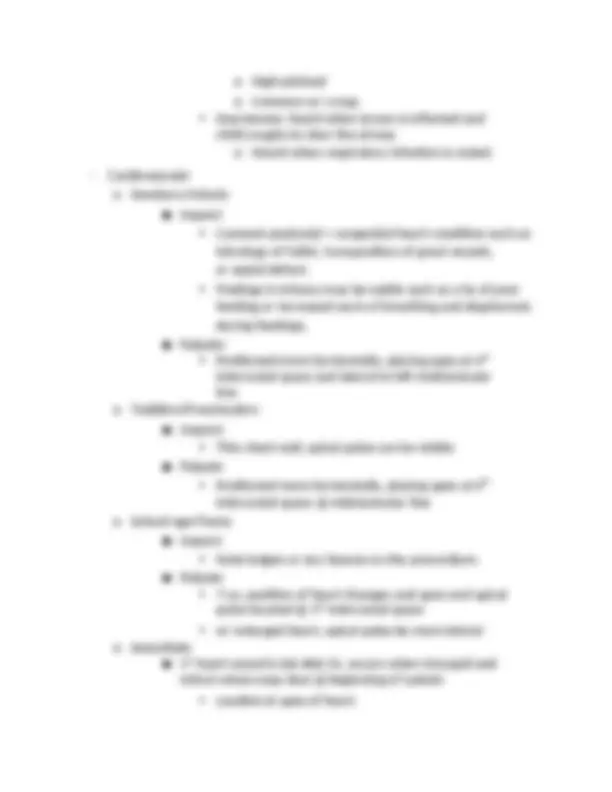
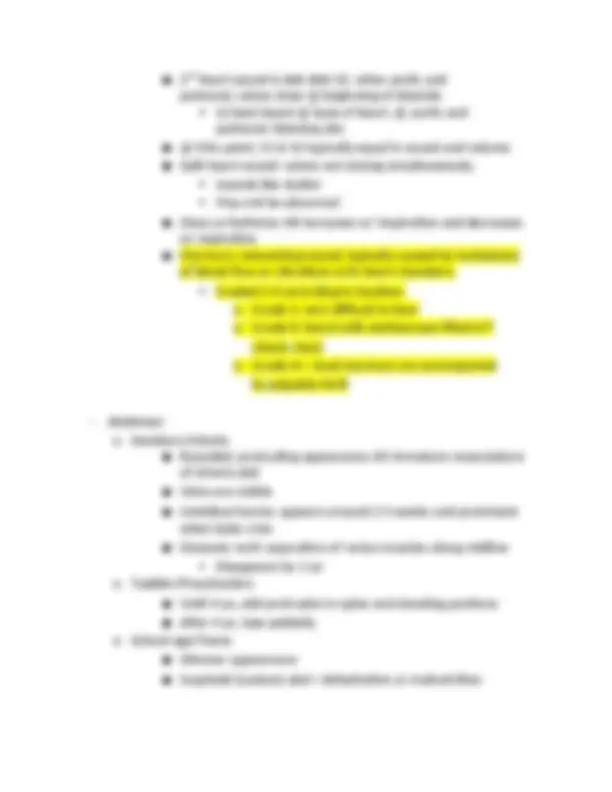
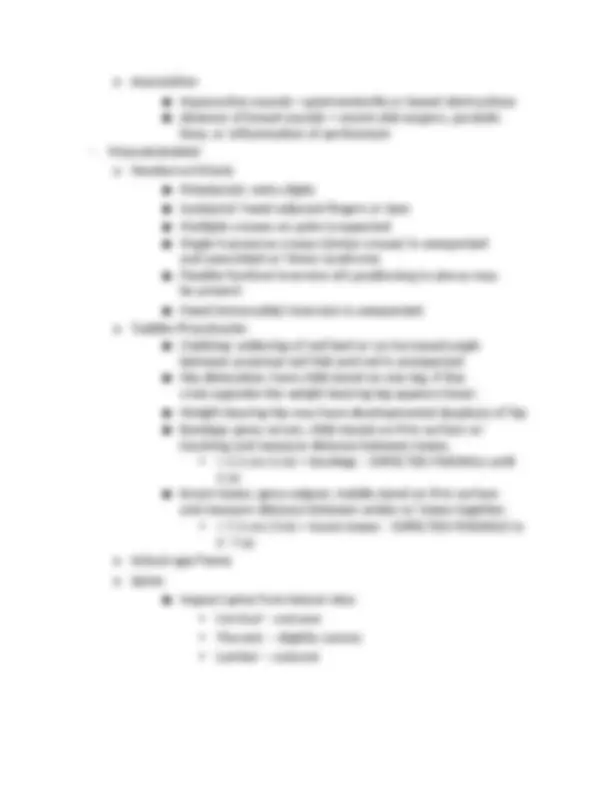
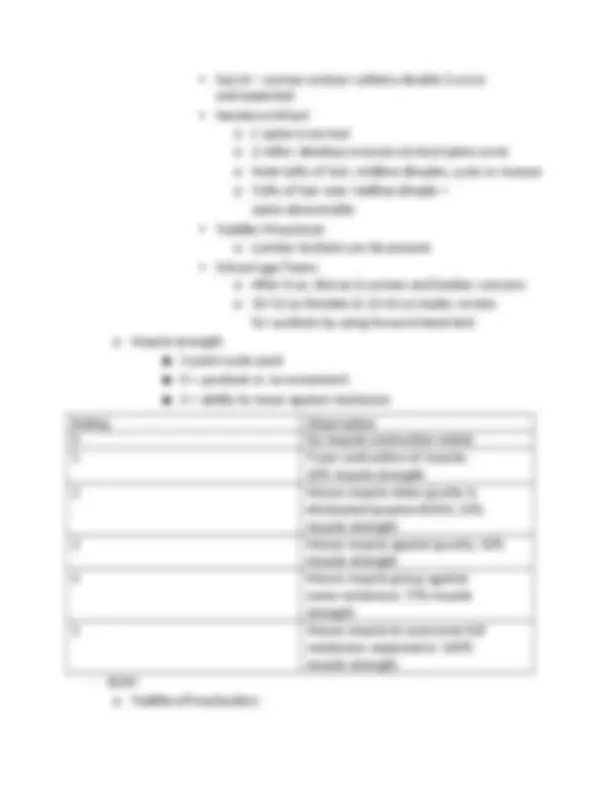
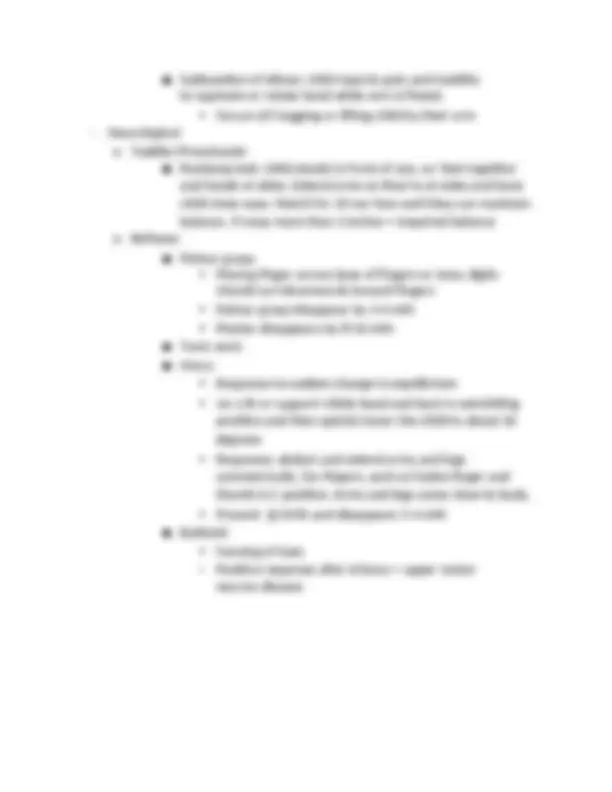


Study with the several resources on Docsity

Earn points by helping other students or get them with a premium plan


Prepare for your exams
Study with the several resources on Docsity

Earn points to download
Earn points by helping other students or get them with a premium plan
Community
Ask the community for help and clear up your study doubts
Discover the best universities in your country according to Docsity users
Free resources
Download our free guides on studying techniques, anxiety management strategies, and thesis advice from Docsity tutors
2024 ATI Comprehensive Physical Assessment of a Child
Typology: Study notes
1 / 22

This page cannot be seen from the preview
Don't miss anything!















o Use concrete terms to describe what you’re doing such as, “I’m going to look in the back of your throat,” not “I need to see your tonsils.” o Encourage child to ask questions during exam but not pressure them. o Take every opportunity to teach child and parents about human body in language that’s simple and suitable for childs developmental level.
▪ Number just under the measuring device is the child’s height; measure to nearest 1/16in or 1mm. o School-age children/adolescents ▪ Use upright scale ▪ Be aware of eating disorders (anorexia nevosa, bulimia nervosa) ▪ Provide education and resources to adolescents and parents when detection of possibility of these disorders. ▪ Measure height using same process for preschoolers.
o Usually reabsorbs w/in first few weeks of life o Soft, spongy hemorrhage is usually only over 1 bone, not crossing the suture line
o Closes by 12-18 months
▪ Sclerae can have pale yellow tint w/ darker skin tones or be white. ▪ Bulbar conjunctivae should be clear
o w/ rising of uvula, posterior pharyngeal wall should be exposed but can be noted with depression of tongue.
o Diaphragm is NO longer primary breathing muscle ▪ Percussion:
nd heart sound is dub AKA S2, when aortic and pulmonic valves close @ beginning of diastole
o Ausculation ▪ Hyperactive sounds = gastroenteritis or bowel obstructions ▪ Absence of bowel sounds = recent abd surgery, paralytic ileus, or inflammation of peritoneum